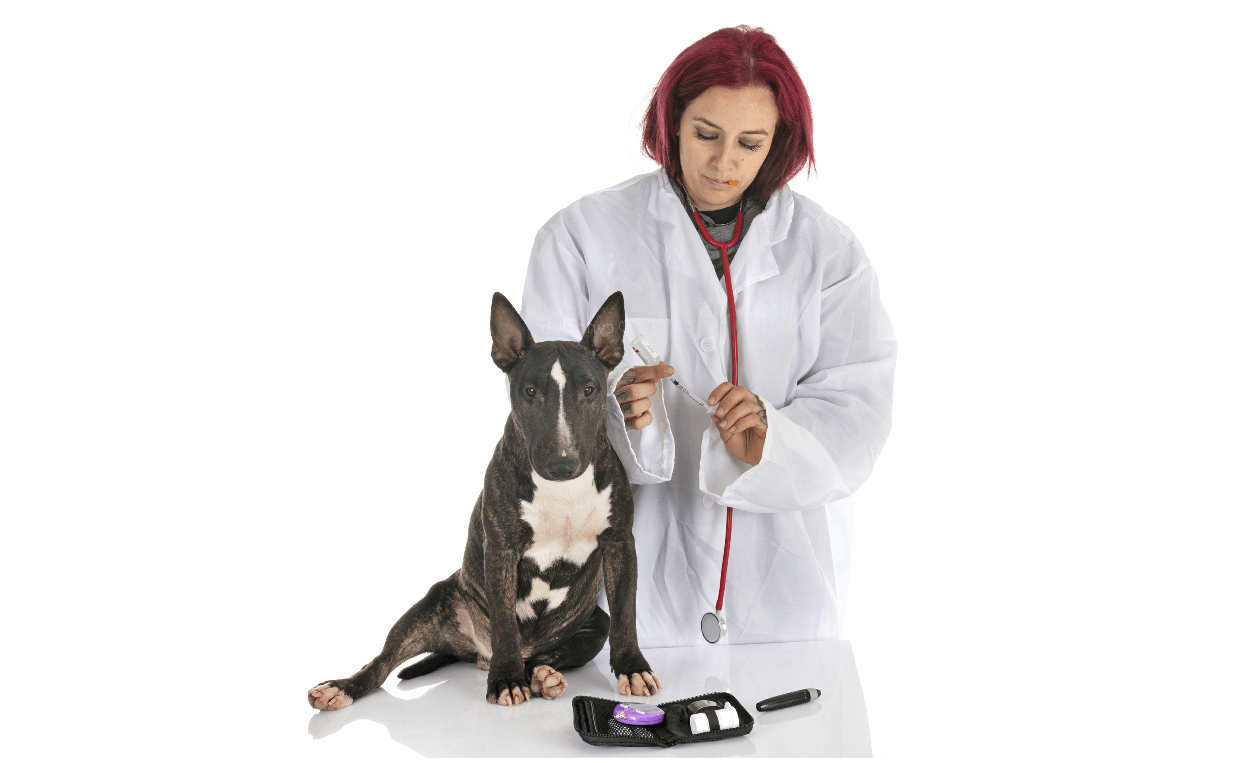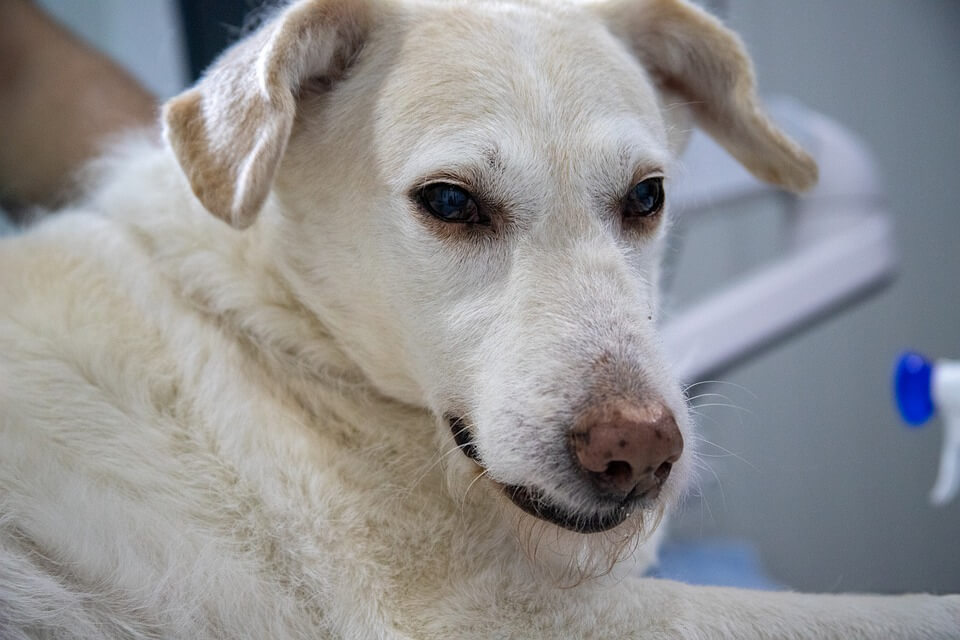
Diabetes is a chronic disease that can affect large animals, such as dogs, cats, apes, pigs, horses and, of course, humans. Although there isn’t a cure for diabetes, the disease can be managed successfully.
The most common type of diabetes found in dogs is diabetes mellitus, or “sugar diabetes”. This type of diabetes is a metabolic disorder. Metabolism refers to how the body converts food into energy.
How Metabolism Works
To better understand diabetes, it’s helpful to understand the process of how food is metabolized by the body.
The body converts food into energy via two mechanisms.
- Glucose – glucose is essential fuel for the body.
The body will break down food into nutrients. One of those nutrients is glucose. Glucose is a type of sugar vital for certain cells and organs. Glucose is absorbed from the intestines into the blood, which is then distributed throughout the body.
- Insulin – delivers glucose through the body.
The pancreas, a small organ next to the stomach, releases insulin. Insulin is sort of a “gatekeeper” designed to collect glucose and other nutrients and use them as fuel.

What is Diabetes?
When the glucose-insulin connection doesn’t work right, diabetes can develop.
There are two types of diabetes seen in dogs.
-
Insulin-deficiency diabetes
Insulin deficiency diabetes develops when the dog’s body doesn’t produce enough insulin. This happens when the pancreas is damaged or otherwise not functioning correctly. Daily injections are needed to help dogs with this type of diabetes. This is the most common type of diabetes in dogs.
-
Insulin-resistance diabetes
Insulin-resistance diabetes occurs when the pancreas does produce some insulin, but the dog’s body can’t utilize it properly. The dog’s cells can’t process the insulin present in the dog’s body, so glucose isn’t being pulled out of the blood and into the cells. Female dogs may experience this type of diabetes during pregnancy or estrus (heat). This type of diabetes is most common in older, obese dogs.
Damage Caused by Diabetes
The negative effects of diabetes are the same, regardless of the type of diabetes. Basically, excessive sugar builds up in the dog’s bloodstream, and yet the body’s cells that need the sugar can’t access it.
This causes two results:
- Cells are starved for vital fuel. Since the body can’t access the glucose it needs, it starts to break down its own fats and proteins to use as alternative fuel.
- High sugar level in the bloodstream damages many organs. Without insulin to help convert glucose in the bloodstream into fuel, high levels of glucose build up in the blood. Over time, the abnormal blood chemistry becomes toxic and eventually will damage organs, such as the kidneys, eyes, heart, blood vessels and nerves.

Symptoms of Diabetes in Dogs
Early Signs
Early signs of canine diabetes includes:
- Excessive thirst
- Increased urination
- Weight loss
- Increased appetite
Advanced Signs
When diabetes becomes more advanced, symptoms can be more pronounced, such as:
- Loss of appetite
- Lack of energy
- Depressed attitude
- Vomiting

Threats to Health
Uncontrolled diabetes can have devastating effects, including:
- Cataracts
- Enlarged liver
- Urinary tract infections
- Seizures
- Kidney failure
- Ketoacidosis – a potentially life-threatening acute condition, often accompanied by
- Rapid breathing
- Dehydration
- Lethargy
- Vomiting
- Sweet-smelling breath
- Triggered by stress, surgery, fasting, infection or underlying health condition
If your dog is diagnosed with diabetes, you should always have ketone testing sticks on hand to test their dog’s urine if any of the above symptoms occur. If your dog’s urine tests positive for ketones, an emergency vet should be called immediately.

Diagnosis of Diabetes
Your veterinarian can easily test for diabetes. He or she will test for excessive glucose in the blood and urine. Blood tests will also test for high liver enzymes and electrolyte imbalances.
The sooner your dog is diagnosed with diabetes, the better chance he or she has of living a normal life.
Diabetes Risks
There are several canine diabetes risk factors dog parents should know.
- Age. While diabetes can occur at any age, it mostly occurs in middle-aged to senior dogs. Most dogs who develop it are age five or older.
- Gender. Unspayed females are twice as likely as male dogs to develop diabetes.
- Chronic or repeated pancreatitis. Chronic or repeated pancreatitis can lead to diabetes.
- Obesity. Obesity contributes to insulin resistance and is a risk for pancreatitis.
- Steroid medications. Steroid medications can cause diabetes when used long-term.
- Cushing’s disease. With Cushing’s disease, the body overproduces steroids internally, leading to diabetes.
- Other health conditions. Some autoimmune disorders and viral diseases are thought to possibly trigger diabetes.
- Diabetes can occur in any breed or mixed-breed. Some breeds seem to have a higher risk, such as:
- Poodles
- BichonsFrises
- Pugs
- Dachshunds
- Miniature Schnauzers
- Puli
- Samoyeds
- Keeshounds
- Australian Terriers
- Fox Terriers
- Cairn Terriers
- Beagles

Treatment of Canine Diabetes
There are several strategies used to help manage diabetes in dogs.
- Your veterinarian will recommend the best type of diet for your dog. Usually, this will include high-quality protein, fiber and complex carbohydrates. These will slow the absorption of glucose so the dog’s body is able to access more. A lower fat content may also be recommended.
- Exercise is very important for all dogs, including dogs with diabetes. Exercise can help with sudden spikes or drops in glucose, keeping your dog’s blood sugar on a more even keel.
- Most diabetic dogs will need insulin injections daily. With practice, this can become a quick, easy routine.
Monitoring and Managing Your Dog’s Diabetes
Canine diabetes can usually be managed successfully without complications. You will need to play a primary role in your dog’s care. You will most likely need to monitor blood glucose levels and give injections daily. Your commitment to keep up with your dog’s care is extremely important.
Your veterinarian will help you determine a management plan for your dog. Hopefully, the right combination of medication, dosage, diet and home monitoring will enable you to keep your dog’s blood sugar consistently regulated and give him or her a full, happy life.
If your dog is diagnosed with diabetes, don’t panic. Work with your veterinary team to ensure your dog receives the best care possible, enabling you to have many happy years together.

If you suspect your dog has diabetes, please contact your veterinarian. This information is designed to present you with general information and is not meant to take the place of a veterinary diagnosis. If you have questions or concerns about your dog’s health, be sure to consult with your veterinarian right away.

 Dog Friendly Cleaning Solutions
Dog Friendly Cleaning Solutions What Every Dog Owner Should Know About Anaphylaxis in Dogs
What Every Dog Owner Should Know About Anaphylaxis in Dogs What Every Dog Owner Needs to Know About Canine Coronavirus
What Every Dog Owner Needs to Know About Canine Coronavirus *Special Report*: Separating Fact and Fiction About the Surge in Canine Respiratory Illness
*Special Report*: Separating Fact and Fiction About the Surge in Canine Respiratory Illness How to Prevent and Treat Motion Sickness in Dogs
How to Prevent and Treat Motion Sickness in Dogs






Leave a Reply